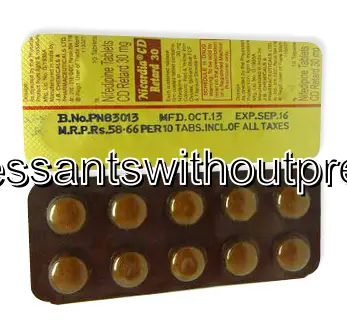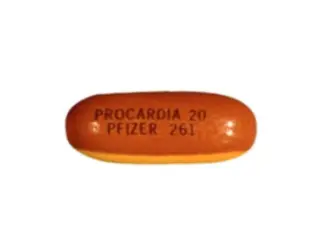| Package | Dosage | Price | Price per Dose | |
|---|---|---|---|---|
| Dosage: 10mg | ||||
| 360 pill | 10mg | NZD550.65 | NZD1.53 | |
| 180 pill | 10mg | NZD299.84 | NZD1.66 | |
| 120 pill | 10mg | NZD218.06 | NZD1.83 | |
| 90 pill | 10mg | NZD182.62 | NZD2.02 | |
| 60 pill | 10mg | NZD139.00 | NZD2.32 | |
| 30 pill | 10mg | NZD81.76 | NZD2.73 | |
| Dosage: 20mg | ||||
| 360 pill | 20mg | NZD656.97 | NZD1.83 | |
| 180 pill | 20mg | NZD362.55 | NZD2.02 | |
| 120 pill | 20mg | NZD272.58 | NZD2.26 | |
| 90 pill | 20mg | NZD234.42 | NZD2.59 | |
| 60 pill | 20mg | NZD177.17 | NZD2.97 | |
| 30 pill | 20mg | NZD111.74 | NZD3.76 | |
| Dosage: 30mg | ||||
| 180 pill | 30mg | NZD706.04 | NZD3.93 | |
| 120 pill | 30mg | NZD509.76 | NZD4.25 | |
| 90 pill | 30mg | NZD417.07 | NZD4.63 | |
| 60 pill | 30mg | NZD316.20 | NZD5.26 | |
| 30 pill | 30mg | NZD185.35 | NZD6.22 | |
| 10 pill | 30mg | NZD70.85 | NZD7.20 | |

Nifedipine Description
Overview of Nifedipine
Nifedipine is a medication primarily used to treat high blood pressure and certain types of angina, which is chest pain caused by reduced blood flow to the heart. Belonging to the class of drugs known as calcium channel blockers, Nifedipine works by relaxing the muscles of blood vessels. This relaxation enables blood to flow more easily, effectively reducing blood pressure and relieving chest pain symptoms. As an oral medication, Nifedipine is available in various formulations, including immediate-release and extended-release tablets, providing flexibility to meet individual patient needs.
Benefits of Using Nifedipine
Many patients find Nifedipine effective in managing their cardiovascular conditions. Its ability to quickly lower blood pressure can help prevent strokes, heart attacks, and other complications related to hypertension. For those suffering from angina, Nifedipine offers relief by decreasing the workload on the heart and improving oxygen supply. Its rapid onset of action in some formulations makes it suitable for acute episodes, while extended-release versions are used to maintain consistent blood pressure levels. Overall, Nifedipine contributes significantly to cardiovascular health when used under proper medical supervision.
Possible Side Effects and Precautions
While Nifedipine is generally well-tolerated, some users may experience side effects. Common reactions include dizziness, flushing, headache, swelling of the ankles or feet, and a feeling of nausea. In rare cases, more severe effects such as a rapid heartbeat, allergic reactions, or worsening of angina can occur. Patients with certain health conditions like low blood pressure, heart failure, or liver problems should consult their healthcare provider before starting Nifedipine. It is important to follow the prescribed dosage and report any unusual symptoms promptly to avoid potential complications.
Usage and Dosage Guidelines
Nifedipine should always be taken as directed by a healthcare professional. The dosage varies depending on the condition being treated, the formulation used, and individual patient factors. Typically, it is taken orally, with or without food. For immediate-release tablets, the dose may be adjusted to control blood pressure or angina attacks. Extended-release tablets are usually taken once daily to ensure steady blood levels. Patients should not stop taking Nifedipine suddenly without medical advice, as this can cause a sudden increase in blood pressure or angina episodes.
Final Thoughts
Overall, Nifedipine remains a vital medication in managing hypertension and angina. Its ability to relax blood vessels makes it an effective choice for many patients. Nonetheless, like all medications, it must be used with caution and under medical guidance. Patients should be aware of potential side effects and any contraindications, ensuring safe and effective treatment. Regular monitoring and communication with healthcare providers are key to achieving the best outcomes while minimizing risks associated with Nifedipine use.

